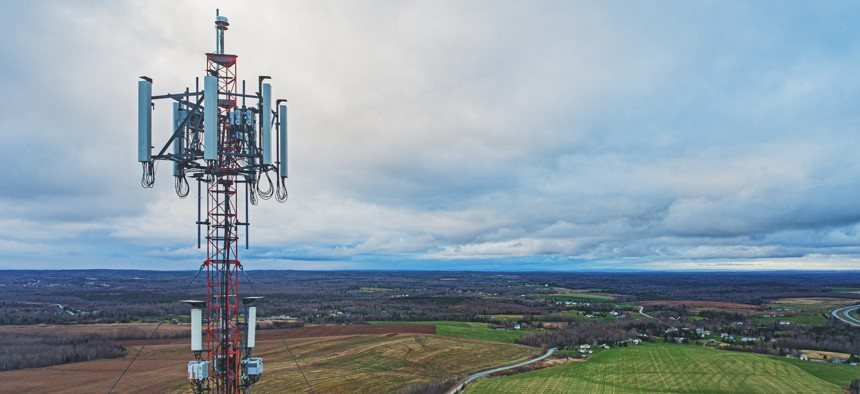Extending broadband from anchor institutions can reduce the homework gap

shaunl/Getty Images
A new study finds that implementing wireless broadband networks “to-and-through” anchor institutions is often the most effective option for connecting students and underserved households.
Expanding the scope of broadband access by deploying wireless technology from anchor institutions, such as schools and libraries, could help mitigate education costs and broaden online participation for underprivileged and isolated communities that lack at-home internet, a recent report shows.
Many households fell into a technological “homework gap” when the COVID-19 pandemic forced classes to go online – a major obstacle for students who did not have internet at home.
In an effort to close the digital divide for rural and underprivileged communities, the Schools, Health and Libraries Broadband Coalition (SHLB) and New America’s Open Technology Institute (OTI) released an economic study that finds implementing wireless broadband networks “to-and-through” anchor institutions “is often the most financially sustainable and effective option for connecting students and underserved households,” the SHLB said in an Aug. 17 statement.
According to the report, enabling anchor institutions to provide wireless broadband service is not as costly as previously thought and has already been used across the country with notable success. Research shows that wireless broadband installation in anchor institutions actually has low design, building and maintenance expenses. It can also reduce the cost of closing the homework gap, the report said, “in terms of the time value of benefit to the community.”
A number of case studies released in conjunction with the report illustrate “how changes in wireless technology allow anchor institutions to become hubs for extending affordable internet service to the surrounding community, often by partnering with the private sector,” the statement said.
Some communities, such as Colorado’s Boulder Valley School District and Utah’s Education and Telehealth Network, are providing off-campus internet access by “self-deploying private LTE networks leveraging the CBRS spectrum.”
Another option entails utilizing mesh or point-to-multipoint Wi-Fi deployments with the help of local government agencies, which places such as Council Bluffs Community School District in Iowa and the East Side Union High School District in California are doing.
A few school districts choose to partner with private sector companies such as Nokia, Netsync, Cambium, Commscope, Kajeet and other entities that support off-campus internet service. Other areas, however, have decided to self-provision as the commercial services provided weak wireless signals or limited coverage, according to the report.
The report also includes a toolkit to help communities evaluate which wireless deployment method is best for them. The Excel-based toolkit lets institutions input data describing the school district’s existing conditions so they can consider different deployment models.
For instance, school districts include data on who will use the network, what infrastructure is available for network installation or the proximity of the district to airports and defense facilities that might restrict the construction of communication towers. Similarly, the toolkit assesses network requirements through factors such as surrounding topography and vegetation that could limit signal propagation, student population size, the number of schools present and the number of devices to be distributed.
Using this information in combination with the estimated costs of service and equipment provided by institutions, the toolkit calculates the costs of deployment for communities to then compare.
“Every community has unique connectivity needs, which is why anchor institutions and other local leaders can be instrumental in bringing internet to everyone,” said John Windhausen Jr., executive director of the SHLB Coalition. “ We hope that today’s research will encourage anchors to explore the full range of options for solving the digital divide, and will show policymakers the value of looking to anchors to create more pathways for extending school and library networks to the home, especially in unserved and underserved markets.”






